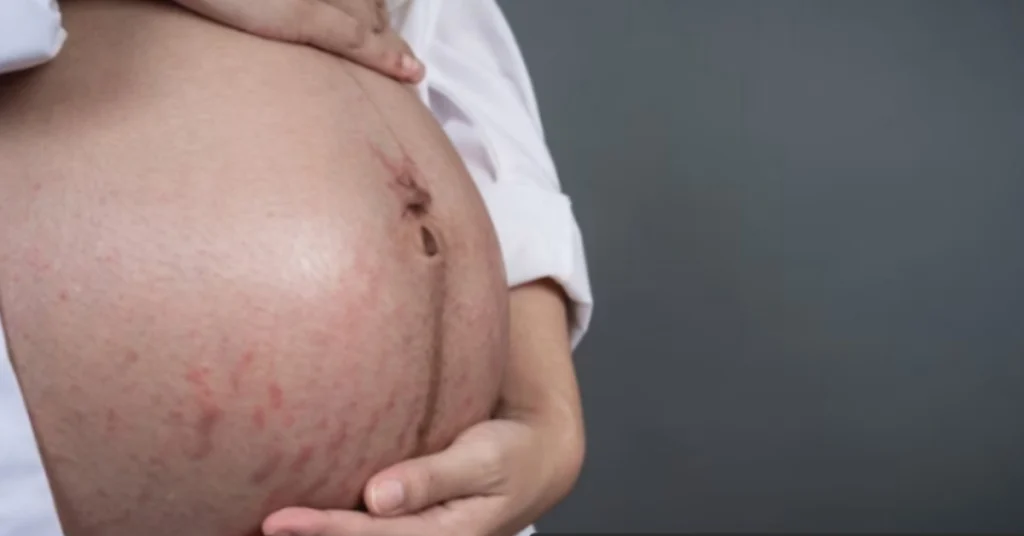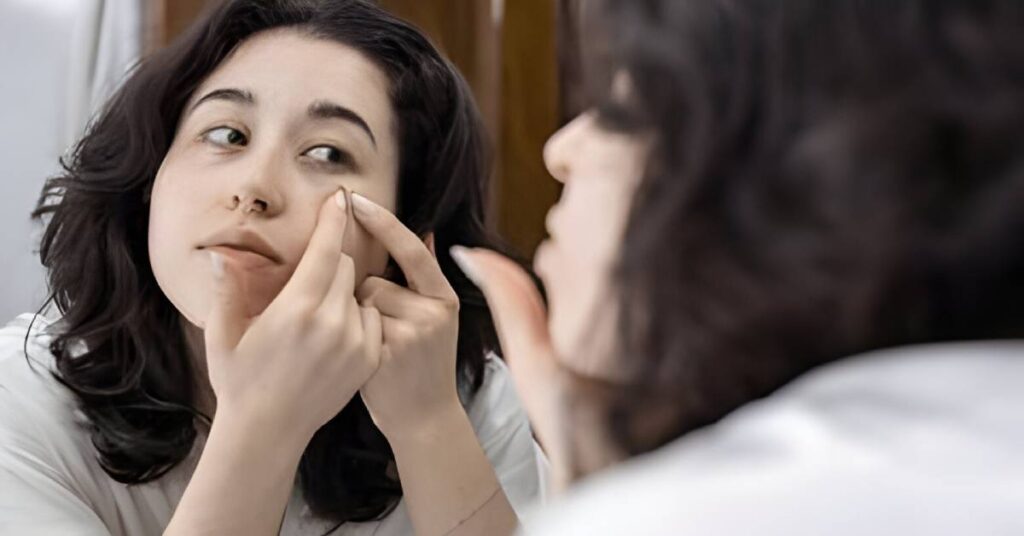Pregnancy is a time of significant changes in a woman’s body, including changes in the skin. Hormonal changes, weight gain, and increased blood flow can all affect the skin’s appearance and health. While some women may experience glowing, healthy-looking skin during pregnancy, others may develop common skin problems. In this blog post, we will discuss some of the most common skin problems women may experience during pregnancy and provide tips for prevention and treatment. Understanding these skin changes can help women feel more prepared and confident as they navigate the physical changes accompanying pregnancy.
Skin Changes During Pregnancy: What to Expect
Pregnancy is an exciting and life-changing time for women, but it can also come with a host of physical changes, including changes to the skin. These skin changes are caused by hormonal fluctuations, increased blood flow, and changes in the immune system. In this blog post, we will discuss what to expect regarding skin changes during pregnancy.
Acne:
Acne is a common skin problem that affects many women during pregnancy. Due to the increased production of hormones, especially androgens, the sebaceous glands can produce more oil, leading to clogged pores and the development of acne. Acne during pregnancy usually appears on the face, chest, and back. It can be mild to severe and may leave scars if not treated properly.
Stretch Marks:
Stretch marks are another common skin problem that women may experience during pregnancy. The stretching of the skin causes these marks due to weight gain and hormonal changes during pregnancy. They usually appear on the abdomen, breasts, thighs, and hips. Stretch marks are harmless but can be unsightly and may cause self-consciousness in some women.
Hyperpigmentation:
Hyperpigmentation is a common skin problem that affects many women during pregnancy. The increased production of melanin causes due to hormonal changes. Hyperpigmentation usually appears as dark patches on the face, neck, and arms. This condition is also known as the “pregnancy mask.”
Chloasma or “Mask of Pregnancy”:
Chloasma, also known as the “mask of pregnancy,” is a condition that causes dark patches on the face, especially on the cheeks, nose, and forehead. It is caused by hormonal changes during pregnancy and is more common in women with darker skin tones. Chloasma is usually temporary and fades after delivery.
Pruritic Urticarial Papules and Plaques of Pregnancy (PUPPP):
PUPPP is a rare but uncomfortable skin rash that affects some pregnant women. It usually appears on the abdomen but can spread to other body parts. PUPPP is not harmful to the mother or the baby, but it can be uncomfortable and cause itching and redness.
Skin Tags:
Skin tags are small, soft, skin-colored growths that can develop on the body during pregnancy. They are harmless but can be unsightly and irritating if they rub against clothing or jewelry.
Varicose Veins:
Varicose veins are enlarged and twisted veins that can appear on the legs during pregnancy. They are caused by the increased pressure on the veins due to the weight of the growing fetus. Varicose veins can be painful and uncomfortable, but they are not usually harmful.
Stretch Marks: How to Prevent and Treat Them
Stretch marks are a common skin problem that many women experience during pregnancy. The stretching of the skin causes these marks due to weight gain and hormonal changes during pregnancy. While they are not harmful, they can be unsightly and may cause self-consciousness in some women. In this blog post, we will discuss how to prevent and treat stretch marks during pregnancy.
- Moisturize: Keeping the skin hydrated and moisturized is essential to prevent stretch marks during pregnancy. Moisturizing helps to improve the skin’s elasticity, which can reduce the risk of developing stretch marks. Use a high-quality moisturizer that contains ingredients like cocoa butter, shea butter, or vitamin E, which can help to hydrate and nourish the skin.
- Maintain a Healthy Diet: Eating a healthy diet during pregnancy is important for both the mother and the baby. A diet that is rich in vitamins and nutrients can help to promote healthy skin and reduce the risk of developing stretch marks. Incorporate foods that are rich in vitamin C, vitamin E, and zinc, which can help to improve skin health and elasticity.
- Exercise:Exercise can help to improve circulation and promote healthy skin during pregnancy. It can also help to maintain a healthy weight and reduce the risk of developing stretch marks. Consult with a healthcare professional to determine the best exercise regimen for your individual needs and abilities.
- Avoid Rapid Weight Gain: Rapid weight gain during pregnancy can increase the risk of developing stretch marks. It is important to gain weight at a healthy and steady pace to reduce the risk of developing stretch marks. Consult with a healthcare professional to determine the appropriate amount of weight gain for your individual needs and situation.
- Use Stretch Mark Creams: There are many stretch mark creams and oils available on the market that can help to prevent and treat stretch marks. Look for products that contain ingredients like retinoids, vitamin C, and hyaluronic acid, which can help to improve skin elasticity and reduce the appearance of stretch marks.
- Treat Existing Stretch Marks: If you already have stretch marks, there are treatments available that can help to reduce their appearance. These treatments include laser therapy, microdermabrasion, and chemical peels. Consult with a dermatologist to determine the best treatment option for your individual needs and situation.
Conclusion
Pregnancy can be an exciting and joyful time, but it can also come with its challenges, including changes in the skin. The most common skin problems women experience during pregnancy include acne, stretch marks, dark spots, and skin tags. While these changes are normal and usually harmless, they can cause discomfort and self-consciousness for some women. Fortunately, many preventative measures and treatments are available to help manage these skin problems.
The Daily Aesthetics Clinic – Redefining Skin & Hair Treatments in Pune
The Daily Aesthetics Clinic is a trusted dermatology and aesthetic center in Pune, offering advanced treatments for acne, pigmentation, hair loss, laser hair removal, Hydrafacials, hair transplants, and personalized skincare.
Under the guidance of Dr. Arshi Rahul, the clinic combines medical expertise with FDA-approved technology to deliver customized treatment plans that focus on restoring skin health, enhancing radiance, and ensuring every patient feels confident and cared for.
With the trust of over 3,500 patients and a 4.9★ rating, The Daily Aesthetics Clinic is known for delivering effective, safe, and personalized care in a calm, welcoming setting.
We serve clients across Pune through our three conveniently located clinics in Baner, Kharadi, and Kalyani Nagar.
Dr. Arshi Rahul
Aesthetic Physician & Skin Specialist | 11+ years of experience
Expert Dermo-Cosmetologist & Trichologist (Gold Coast Training Academy, Australia) | Certified in Laser, Botox, Fillers & Thread Lifting | Over 10 Years of Advanced Aesthetic Expertise






